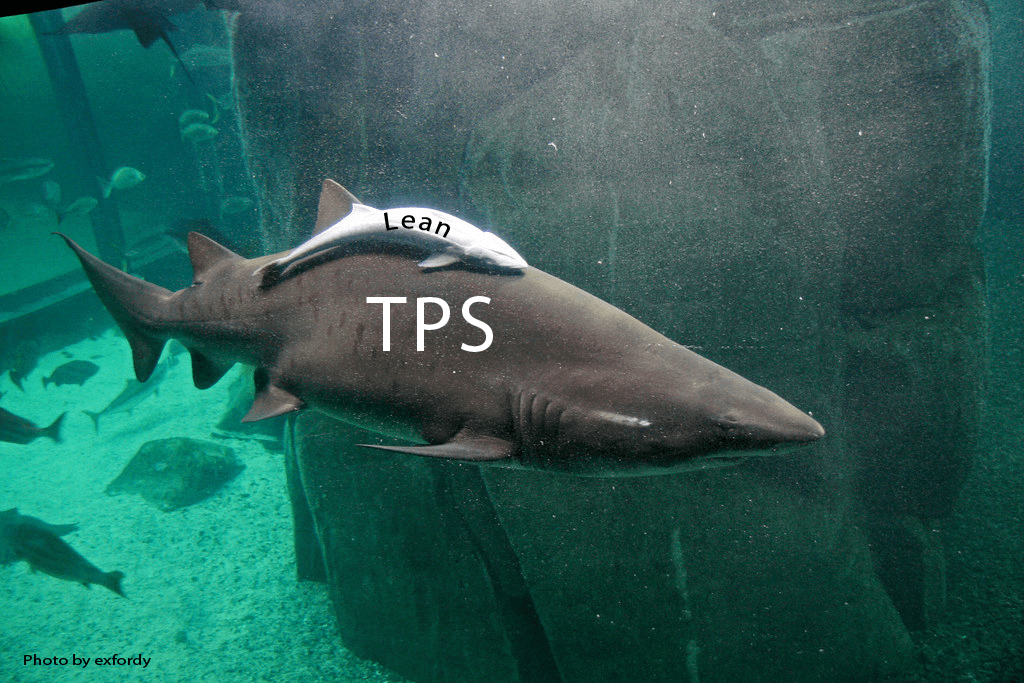Sometimes this is how I think about things — hitching one’s derivative TPS product/service to Toyota. This is not necessarily a bad thing. The free riders shown in the image below can indeed be useful in certain circumstances. It is not as if they are without merit. You may agree or disagree with what the image portrays, but for sure Toyota has been and remains benevolent and generous in accommodating the management practices shown sitting in the trailer. Toyota does not point out the defects these, but that is what I and others do. In my case, as a university professor, to educate my students and the public. So I’d like to point out how the mindset, thinking, and spirit that created TPS is missing in these management practices.

Hitching one’s derivative product/service to Toyota, good as they may be, has resulted in a loss of contact with the original system of management and all that it had (and has) to offer — especially the mindset, thinking, and spirit that created and improved TPS over time, because that mindset is even more useful in the digital age than it was in the analog age. Toyota’s management system is difficult to grasp and requires continuous study and practice. Unfortunately, that is a huge turn-off for most executives. The alternative, then, is to simply do what everyone else does, what I call the “CEO Wealth Creation Playbook.” When that happens, there is no development of human capability and creativity.
The core idea behind TPS and The Toyota Way is to develop human capabilities and creativity to solve difficult problems in ways that consume little resources and, importantly, result in simplification (not greater complexity, as if often the case). Toyota’s kaizen methods are unlike any other. Unfortunately, the Lean project, beginning with Lean production in 1988 and known as Lean management since 2007, never emphasized the importance of kaizen. Nor did it focus on the pace of kaizen that is needed to keep up with changing times and to produce business results. Agile has done a better job in that particular respect. Lean Six Sigma? If Six Sigma is performed today as I have seen it performed in the past, then the pace of problem-solving is way too slow to keep up with ever-changing business (and human) conditions.
In the future, humanity will likely require the development of human capability and creativity to solve difficult problems on a grand scale. Toyota gave us much to learn from in this respect, but which few seem to have taken advantage of. And those that did were mostly people several layers below the CEO. That is why, despite moving into the digital era, the mindset, thinking, and spirit that produced TPS is still worth learning. But as we know, that competes against myriad other turnkey solutions that are faster and easier for leaders to implement in the short run, albeit less effective in the long run. The question is, how do we improve the competitiveness of the mindset, thinking, and spirit that created Toyota’s management system, to expand its reach. That, more than anything, is what is truly needed.
The people who taught me TPS, Shingijutsu, have spent the last 32 years teaching people the mindset, thinking, and spirit that created TPS via kaizen. It is truly heroic work, whose mission it is “to create a better future for both people and the natural world… [to achieve] harmony between people and Planet. We must begin at the genba, master the basics, and do so on a scale larger than has ever been done before.” Too often, the spirit and the great things that people learn in kaizen are quickly extinguished by managers. Now that we finally understand the details of why managers do that, perhaps some solutions are nearer at hand than we realize.
Lean has always been, and will always be, a free rider on TPS and the Toyota Way.

